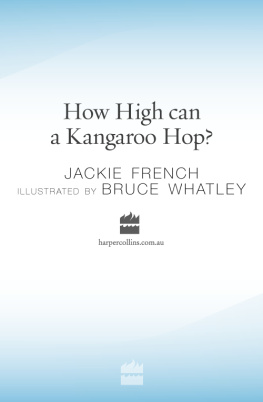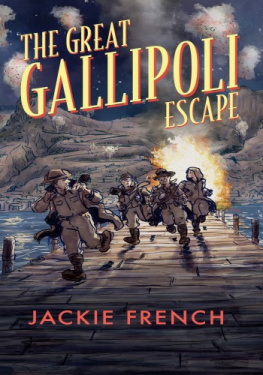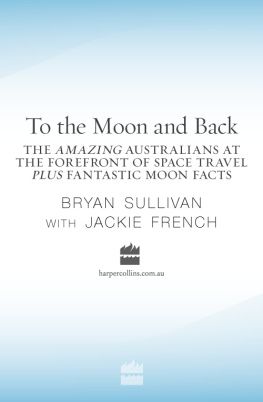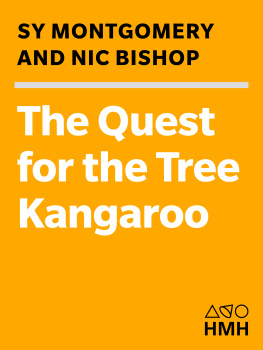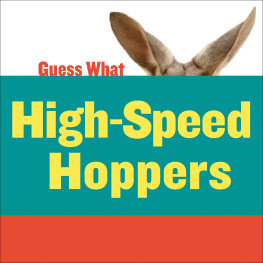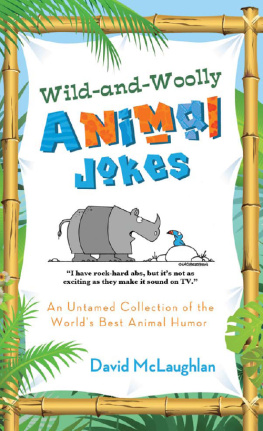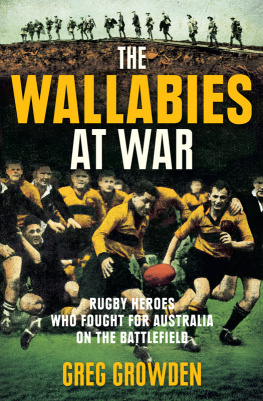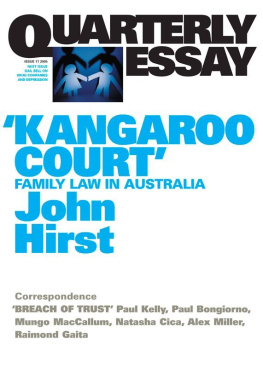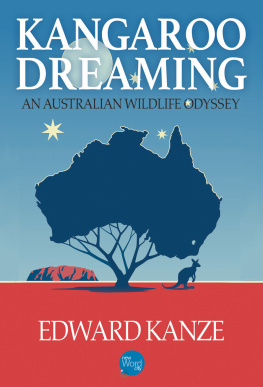To Rosies, Bounce, Flounce, Biceps, Harry, Josephine, Hopalong, Freds One, Two and Three, Pratt, House Mouse, Fuschia, Nuisance, Giganticus and all the other big foots who have shared their lives with us.
1
Welcome to a most amazing world
A ustralia has some extraordinary animalsdifferent from all other animals in the world. Thats because our animals have been isolated from animals in other countries for at least 45 million years. Originally, Australia, Antarctica and South America were joined together and had the same animals; animals which were the ancestors of modern marsupials (more about marsupials later). But then this big landmass broke up into the different continents we know today and Australia was left on its own as a big island.
Australias animals had to evolve without any contact with the rest of the world, except for New Guinea, which was joined onto Australia till about 8000 years ago, when the seas rose after the last Ice Age. And that is what makes them so unique.
Australias animals had to be tough. At times in its history Australia was very wet and the animals that evolved were suited to those conditions. But today, most of Australia is desert. Even in wet areas there are often years with little rain. Droughts can last hundreds or even thousands of years. What kind of animals can survive a land like this?
Ones that can hop, instead of walk. Our kangaroos and wallabies can move more efficiently than any other animal on Earth.
Hopping helps kangaroos and wallabies travel to new places to feed in a land that can be dry for years, and then suddenly turn green and lush. Roos and wallabies have massive tummies for storing food too. And in bad times they can live on dry grass or leaves that few other animals could live on. Many can go for hundreds of kilometres with little or even no water, just on the moisture in their food.
When their land is dry and drought stricken, roos and wallabies can delay their unborn babies from developing until the rains and grass return again. But in good times they can breed quickly, to make the most of the lush grass before the sun turns the land brown again.
Some roos can climb trees. Others can swim, or leap from rock to rock. The largest roos of all can leap nine metres in a single bound! And all female roos have pouches for carrying their babies and they dont fall out, either (well, most of the time, anyway!).
Our kangaroos and wallabies are incredible! So why dont we yell Amazing! whenever we see a roo or wallaby?
Because were used to them. We see roos in advertising, or on television shows. Sporting teams are named after them. Hardly a day goes by when we dont hear the word roo or wallaby.
Yet even though the kangaroo is one of our national emblems, most Australians have never lived with kangaroos. Most know very little about these extraordinary creatures that share this country with us.
Im lucky. Ive lived with roos and wallabies and other wildlife most of my life. The roos keep the grass short around our house, and the wallabies eat my roses and wake me up as they pound past my bedroom at two in the morning. One of the most wonderful things in my life is being able to walk among wild animals who accept me as part of their world.
But these days fewer and fewer people can share the lives of roos and wallabies. Every night thousands of roos and wallabies are killed on our roads. Many farmers still consider roos or wallabies as pests, and believe that they should be destroyed. They have never even tried to find ways to farm with wildlife. Many wallabies such as the Bridled Nail-tail Wallaby and the Yellow-footed Rock Wallaby are endangered, and may become extinct in the next ten years because much of their land has been taken away from them, and feral animals eat their food or kill their babies. But if we care enough, humans and roos and wallabies can share this land.
And thats why I wrote this book: to share with you this fascinating world of one of the most incredible animals in the universe, and hope that you, too, will help find ways for wild animals and humans to live together.
Amazing roos
 A male kangaroo is called a boomer. Male roos can fight each other for three days and nights, only stopping when they drop from exhaustion.
A male kangaroo is called a boomer. Male roos can fight each other for three days and nights, only stopping when they drop from exhaustion.
 A female kangaroo is called a flyer. Mother roos and wallabies can feed three babies at the same timeand give each one of them a different sort of milk. (No, not chocolate flavoured!)
A female kangaroo is called a flyer. Mother roos and wallabies can feed three babies at the same timeand give each one of them a different sort of milk. (No, not chocolate flavoured!)
 A baby kangaroo is called a joey. A joey will eat its mothers droppings because they contain tiny organisms from the mothers gut that will help the joey digest grass. Without them the joey might get diarrhoea and even die.
A baby kangaroo is called a joey. A joey will eat its mothers droppings because they contain tiny organisms from the mothers gut that will help the joey digest grass. Without them the joey might get diarrhoea and even die.

Mother would can feed three babies at the same time, each on a different kind of milk. (No, not chocolate flavoured!)
Kangaroo basics
The basic difference between a kangaroo and a wallaby is that a roo is big and a wallaby is small. But there are lots of differences between the many types (called species) of roos and wallabies.
Big Red Kangaroos can stand nearly two metres tall and weigh around one hundred kilograms. But wallabies like the Nabarlek are tiny and delicate and weigh less than a kilogram.
Many species of roos and wallabies live in groups called mobs. Sometimes there are great mobs of fifty or even more than a hundred roos, all munching grass together. But other species mostly live by themselves unless they have a baby. Some species, like the Red-necked Wallaby, live in small groups of five or ten.
Different roos and wallabies eat different foods, too. Kangaroos eat almost nothing but grass, or grass-like crops like young oats or wheat. Some wallabies mostly eat grass too, but other wallabies like the Black-tailed Wallaby, only eat grass if theres nothing tastier around! They use their paws to pull down vines and suck them up like spaghetti. They also eat young leaves or shoots and love to taste new foods.
Kangaroos mostly like flat plains or open forest. Most wallabies like shrubs and shelter. But when times are bad roos will move into the denser forest country, and other wallabies like prefer open grassy places.

Different kangaroo and wallaby species vary enormously in size, from giant big Reds to the tiny Warabi
Fact
Even though kangaroos and wallabies are only found naturally in the wild in Australia and New Guinea, some have been taken by animal collectors and gone wild in New Zealand, Great Britain and Hawaii.
Mysterious marsupials
Kangaroos and wallabies are marsupials. Marsupials give birth to their young when theyre very small and not fully developed. The tiny baby keeps growing attached to a teat on the outside of its mums body. Most marsupialsbut not allhave pouches where the baby lives.
Many people think that they are only found in Australia because there are so many marsupials here. But there are also marsupials in North and South America, and lots in New Guinea. Although they had the same ancestors as Australian marsupials they have evolved into quite different animals. Marsupial fossils have even been found in Europe and Asia.

